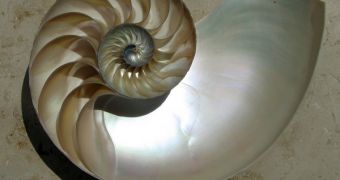The end result of the latest research, led by scientist Robert Ritchie, conducted at the Lawrence Berkeley National Laboratory, belonging to the US Department of Energy, is a ceramic compound, which mimics the structure of nacre (commonly known as mother-of-pearl) with a ceramic compound that is more than 300 times stronger than its constituents.
"We have emulated nature's toughening mechanisms to make ice-templated alumina hybrids that are comparable in specific strength and toughness to aluminum alloys. We believe these model materials can be used to identify key micro structural features that should guide the future synthesis of bio-inspired, yet non-biological, light-weight structural materials with unique strength and toughness," Ritchie explains.
Nacre can be found in nature in the inner layers of certain species of mollusks, and is one of the toughest materials employed by animals as self-defense. It also possesses an iridescent glow, which has made it very popular as a decorative material in various crafts, over the centuries. It has also been used to amplify the “glow” effect on religious paintings in churches and cathedrals.
Though it’s composed of 95 percent argonite – a hard and brittle calcium mineral – as a whole, mother-of pearl is 3,000 times harder to break than this mineral alone. Such a massive ratio could not be obtained in the lab until recently, when Ritchie designed a ceramics compound that was synthesized out of frozen sea water.
The salty water freezes in a very specific way, with the water molecules forming hard layers, which trap impurities such as salts between them. "Since seawater can freeze like a layered material, we allowed nature to guide the process by which we were able to freeze-cast ceramics that mimicked nacre," says Antoni Tomsia, one of Ritchie's co-workers on the project.
"The key to material toughness is the ability to dissipate strain energy. Infiltrating the spaces between the alumina layers with polymer allows the hard alumina layers to slide (by a small amount) over one another when load is applied, thereby dissipating strain energy. The polymer acts as a lubricant, like the oil in an automobile engine," concludes Ritchie.

 14 DAY TRIAL //
14 DAY TRIAL //